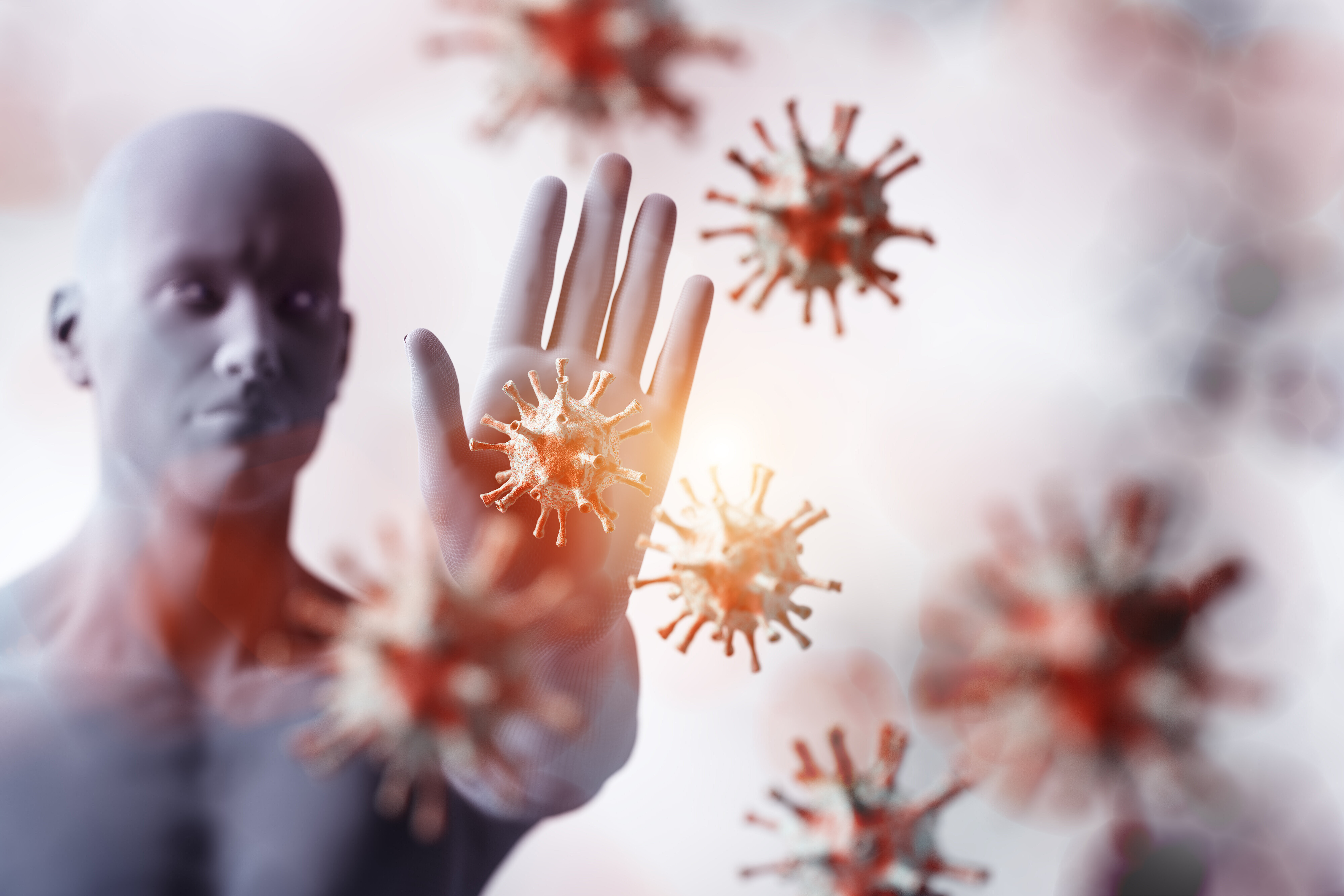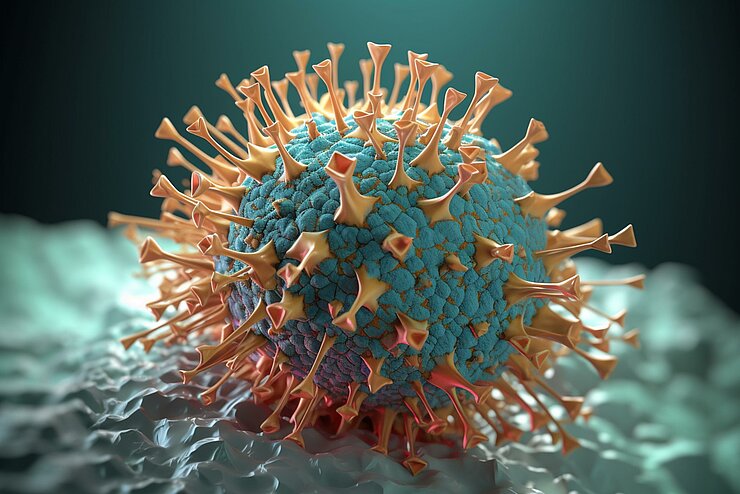When the COVID-19 pandemic struck in 2020, vaccines against the SARS-CoV-2 virus, which was spreading all around the world, were developed in record time. There was widespread anxiety – and the expectations of many people regarding the effect of the vaccines were just as high: The vaccines should not only protect against severe illness, but also prevent both infection and the transmission of the virus. "That would certainly have been very desirable. But expecting the COVID-19 vaccines to achieve all this was clearly too ambitious and in some ways even illusory," says Prof Carlos A. Guzmán, who is the head of the department Vaccinology and Applied Microbiology at the HZI. "Because vaccines administered through an injection are not generally designed to be able to do that at all, as they cannot reach and activate the immune system in the right location and activate the required immune effector mechanisms."

What can we expect from vaccinations – and what not?

Yet, injection-based vaccinations are highly effective and can achieve the most important goal of vaccination: protection against severe courses of the disease. Stimulated by the vaccination, the immune system produces antibodies, effector cells and the so-called memory cells that remember certain features of the pathogen for use in the long term. In the future, when the vaccinated subject enters in contact with the pathogen, the immune system is activated very quickly and produces suitable antibodies and effector cells to ward off or at least contain the illness. "For a certain period of time other people can catch the disease-causing pathogen from an infected vaccinated person," says Guzmán. "But different studies showed that this time window is usually shorter and the pathogen load is reduced as well after vaccination."
Effective protection at the point of entry
However, what is the proper location for a vaccination to act in order to provide protection against the infection and significantly reduce the risk of transmission? "At the mucous membranes," says Guzmán. "Vaccines administered via the mucosa stimulate the formation of mucosa-specific memory cells right in the mucosa, which injected vaccines cannot do.” Some mucosal vaccines against influenza and polio (poliomyelitis) are already available. They are applied via the nasal mucosa in the form of a spray, or via the oral mucosa in the form of an oral vaccine to be swallowed. This means that they are administered right at the point of entry at which the pathogens causing these diseases enter the body. The vaccination builds up an effective defence barrier at this site that, ideally, blocks the pathogens completely or interferes with the infection process.
But why aren't many more vaccines administered via the mucous membranes then? "The problem has been the mucosa itself," says Guzmán. "Because the mucosa possesses a sophisticated barrier function that is supposed to ensure that pathogens or other dangerous entities are effectively warded off, as well as to prevent overreactions of the local mucosal immune system." This means that vaccines have to trick the mucosa in some way to be able to both get inside and promote an effective response. The toolbox with the right tricks for achieving that needs to be expanded. This is what Guzmán’s and his team’s research focusses on. He is searching for mucosal immune response enhancers (adjuvants) that promote an effective activation of the immune system post vaccination. "Mucosal vaccination is an extremely effective form of immunisation. We hope that research will continue making progress in this aspect in the next few years so that this type of vaccination can be routinely used against a broad spectrum of pathogens in the future," says Guzmán.
Eradicated – an unprecedented success
Besides protection against disease, infection and transmission, there is another – albeit quite ambitious – goal that can be pursued through vaccination: the complete eradication of a pathogen. This was achieved for the first and so far only time in 1980. Since then, the smallpox virus has been considered to have been eradicated. Poliovirus and measles virus are two candidate pathogens on the current eradication list as they are quite dangerous and meet all prerequisites for possible eradication. "The most important requirement is that the pathogen is able to infect exclusively humans and has no animal reservoirs available to it," Guzmán explains. "It is also crucial that the pathogen cannot change greatly in a short period of time or give rise to many subtypes. And: The vaccine used for eradication must achieve efficient and long-lasting immunity through, ideally, a small number of vaccinations providing a robust defence in case of renewed contact with the pathogen." Polio vaccines today provide effective protection against all three existing types of poliovirus based on three vaccinations and a subsequent booster. Only two doses of vaccine are needed for lifelong protection against measles.
So far, it has not been possible to eradicate polio and measles. This is because it requires a comprehensive vaccination concept working on a global scale, which is associated with enormous effort and high costs. "There are a number of pitfalls in the process, for example the access to the vaccine and trained health care personnel must be guaranteed in every corner of the globe, but the level of public acceptance and compliance of the vaccination, together with a robust infrastructure for vaccine storage are crucial as well. For example, uninterrupted cold storage cannot be reliably provided in every region of the world. With regard to smallpox, we were lucky at the time that the vaccine did not require a very strict cold chain, as e.g. mRNA vaccines do," says Guzmán. A vaccine against polio has been available since 1955. There have been no new polio infections reported in Germany since 1992. The African continent was declared polio-free in August 2020. However, occasional cases of polio continue to pop up in various crisis regions around the world. Complete eradication is not yet in sight, similar to measles.
Trust can only come from clarifying information

"Some 25 years ago, a study linking measles vaccination to autism was published. The results of the study turned out to be wrong, though. But many people still remain unconvinced," says Guzmán. "Good clarifying information is enormously important to gain the public's trust in vaccinations that protect them against dangerous infectious diseases. And this also benefits vulnerable groups of people who cannot be vaccinated such as newborns or people with suppressed immune systems."
The measles virus is one of the most contagious pathogens. To eradicate it, 95 per cent of the world's population would have to be vaccinated. "Regrettably, we are still a long way from that," says Dr Berit Lange, who is the acting head of the Epidemiology department and the Clinical Epidemiology at the HZI. "The vaccination gaps are still too extensive, and outbreaks continue to occur in many regions of the world, even in Germany." Currently, there is even an upward trend year-on-year: As early as in February of this year the number of measles cases worldwide surpassed the number for all of 2022. "And this was caused by the Corona pandemic. Nearly 40 million children missed one of the two measles vaccinations during this time," explains Lange. "This is where countermeasures must be taken at full speed."
In Germany, the number of measles cases has dropped significantly from 516 in 2019 to 15 in 2022. Might this possibly be an indication of the effectiveness of the compulsory measles vaccination, which was introduced in 2020 for children in day-care centres and schools as well as for the staff of community facilities and medical institutions? "That is difficult to say at this stage,” says Lange. "The decrease in the measles incidence in Germany could also be related to the Corona pandemic, in that a reduced number of personal contacts may also lead to a reduced incidence of measles. Whether, and how well, compulsory vaccination works will only become clear in the next few years."
What to expect?

What is clear though is that the eradication of pathogens through vaccination is likely to remain the exception rather than the norm. So, what can we expect from vaccinations at this time? "We are fortunate today to have effective vaccines available against many dangerous infectious diseases. We can expect them to protect us against symptoms of the disease or at least against severe courses and lifelong severe consequences of the disease," says Carlos Guzmán. "We can also expect a favourable balance between the risks associated to a vaccination and its benefits. In this respect, a prophylactic vaccination must offer a clear-cut benefit to the vaccinee, as vaccines are administered to healthy individuals to prevent a hypothetical risk. For assessment of this aspect, the discussion with one’s doctor is and remains irreplaceable."
Author: Nicole Silbermann
Published: November 2023
[Translate to English:]

